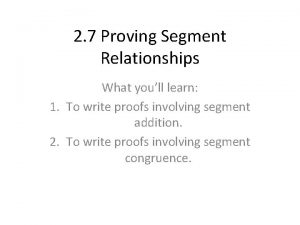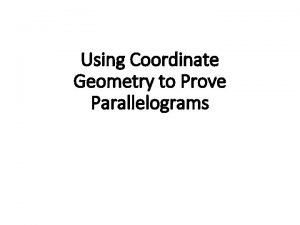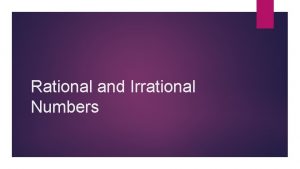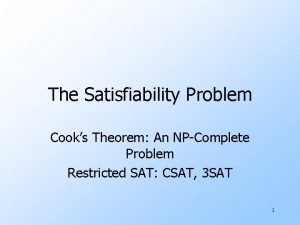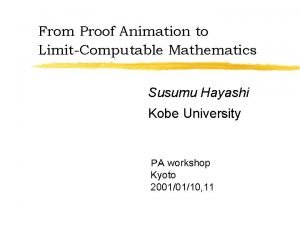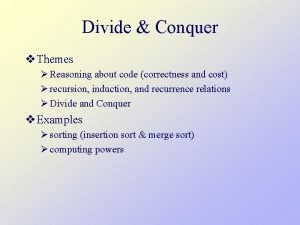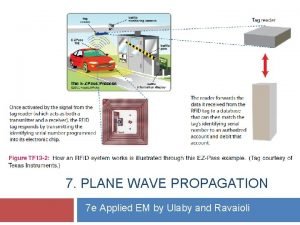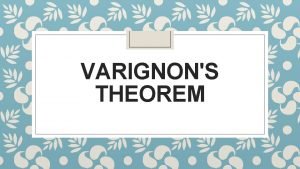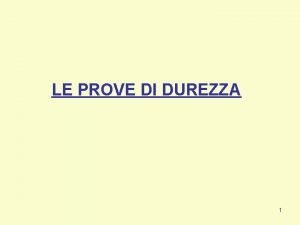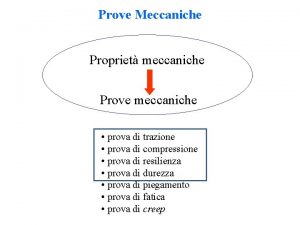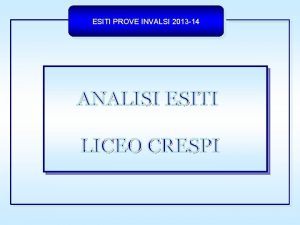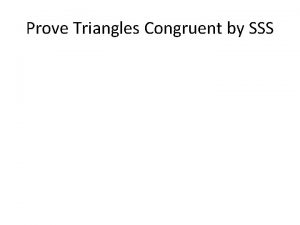Understand use and prove properties of and relationships













- Slides: 13

Understand, use and prove properties of and relationships among special quadrilaterals: parallelogram, rectangle, rhombus, square, trapezoid, and kite. MM 1 G 3 D

Vocabulary Parallelogram: A quadrilateral with both pairs of opposite sides parallel. Rhombus: a parallelogram with four congruent sides. Rectangle: a parallelogram with four right angles. Square: a parallelogram with four congruent sides and four right angles.

Corollaries A quadrilateral is a rhombus if and only if it has four congruent sides. A quadrilateral is a rectangle if and only if it has four right angles. A quadrilateral is a square if and only if it is a rhombus and a rectangle.

Example 1 Classify the quadrilateral. 7 7 73° 7 7 This quadrilateral is a rhombus because all sides are congruent.

Example 2 Classify the quadrilateral. The quadrilateral is a rectangle because all angles are right angles. We do not know if it is a square because we do not know if all of the sides are congruent.

Rhombus A parallelogram is a rhombus if and only if its diagonals are perpendicular.

Rhombus A parallelogram is a rhombus if and only if each diagonal bisects a pair of opposite angles. 53 53 127 127 53 53

Rectangle A parallelogram is a rectangle if and only if its diagonals are congruent. A B AC is congruent to BD so ABCD is a rectangle. D C

Example 3 The diagonals of rectangle EFGH intersect at T. Given that m<GHF = 40° and EG = 16, find the indicated variables. E F z T x y H G Find x. EFGH is a rectangle so the diagonals are congruent. EG = 16 so FH = 16. EFGH is a parallelogram so the diagonals bisect each other. Therefore, x = FT = 8.

Example 3 The diagonals of rectangle EFGH intersect at T. Given that m<GHF = 40° and EG = 16, find the indicated variables. E F z T 40 H x Find y. HT and GT are equal, so the angles opposite them are equal. Therefore, m<GHF = m<HGE. y G

Example 3 The diagonals of rectangle EFGH intersect at T. Given that m<GHF = 40° and EG = 16, find the indicated variables. E F z T 40 H x Find y. HT and GT are equal, so the angles opposite them are equal. Therefore, m<GHF = m<HGE. Since m. GHF = 40°, m<HGE = 40°. 40 G

Example 3 The diagonals of rectangle EFGH intersect at T. Given that m<GHF = 40° and EG = 16, find the indicated variables. E F z T x ΔEHG is a right triangle with <H being the right angle. 40 H Find z. G z + 90 + 40 = 180 z + 130 = 180 – 130 z = 50

Assignment Textbook: p. 319 -320 (1 -28)
 To understand recursion you must understand recursion
To understand recursion you must understand recursion Proving segment relationships
Proving segment relationships How could you use coordinate geometry to prove that bc ad
How could you use coordinate geometry to prove that bc ad How to prove a parallelogram in coordinate geometry
How to prove a parallelogram in coordinate geometry Sas congruence theorem
Sas congruence theorem Intensive and extensive properties
Intensive and extensive properties Physical and chemical properties
Physical and chemical properties Is 24 irrational
Is 24 irrational Explain cook's theorem
Explain cook's theorem State and prove hilbert basis theorem
State and prove hilbert basis theorem Prove correctness of divide and conquer
Prove correctness of divide and conquer Stock theorem
Stock theorem Polarization ellipse equation
Polarization ellipse equation Varignon's theorem is used to find
Varignon's theorem is used to find

